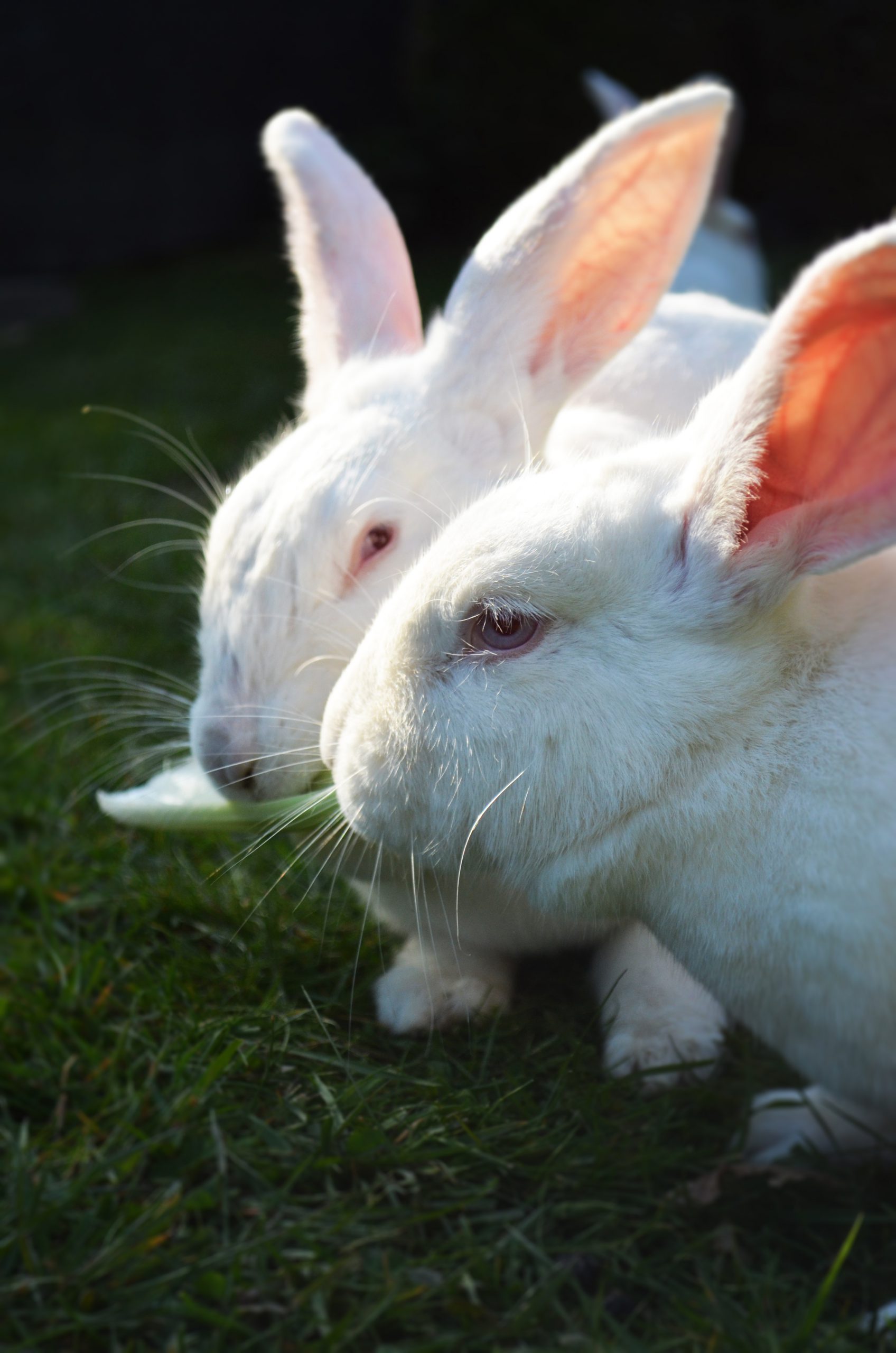We would like to list some practical aspects related to vaccinations, feeding and spaying/neutering of rabbits.
Vaccinations
There are three diseases that can be vaccinated against: myxomatosis and the 2 types of RHD. These are all infectious rabbit diseases, which are usually fatal and against which treatment is usually futile. Vaccination is an efficient way to prevent these diseases.
Myxomatosis is a disease of viral origin transmitted by stinging insects, such as mosquitoes. It causes soft swellings on eyelids, ears and genitals as well as hard lumps in the skin. Tear and nasal discharge can also be observed. The animals usually die after a more or less short period. Against this, an annual revaccination is sufficient.
RHD or VHD (rabbit haemorrhagic disease, also known as viral haemorrhagic diarrhoea) usually produces no symptoms; the rabbits die suddenly, often with some bloody fluid around the nose. This disease is transmitted by wild rabbits or by contaminated green feed or litter.
Meanwhile, there is also a new variant in which mortality occurs on average after 3-5 days. Of course, this also means that the virus has longer time to spread.
In both cases, we sometimes see shortness of breath, fever, haemorrhage and nervous signs just before the rabbit dies.
In the classical variant, the mortality rate is more than 80%. In the new variant, this rate is lower (5-70%). However, if the animals survive, a more lingering syndrome can occur, where the rabbit suddenly deteriorates after a longer period of being ill and still dies. An annual vaccination is sufficient for the classical variant. Protection against the new variant requires a six-monthly shot.
Nutrition
Rabbits naturally eat a very high-fibre diet. This is necessary to wear down their constantly growing teeth and also because fibre helps to keep the intestines healthy. At the same time, a correct diet also ensures that your rabbit does not develop excess weight.
The basic diet for rabbits is therefore hay, which they should have permanently available with fresh drinking water.
Good hay should smell fresh, not be compressed and not contain too much dust. Mixed hay (such as with flowers or herbs) is preferred.
In addition, they may have a daily portion of vegetables. However, do not give avocado or onions and derivatives (such as leeks), as these are toxic to rabbits. In general, whatever grows above ground is best. What is below ground contains more sugars and should therefore be given on a limited basis. So: carrot leaves fine, carrot itself limited – beet leaves fine, beet itself limited.
Pellets are not at all an alternative to basic nutrition but are a tasty addition, rather a dessert.
A lot of food sold in pet shops consists of a muesli mix with various cereals. Because rabbits selectively eat certain forms and not others, they can become vitamin deficient with this food. Moreover, these mueslis also contain too many sugars and too little fibre. This can give your rabbit hooks on the molars or elephant teeth. The lack of fibre also makes them suffer from diarrhoea or sticky poo.
These problems are easily prevented by feeding a pellet food that contains at least 20% indigestible fibre. We recommend Supreme Science, Cuni Complete or Oxbow. Of this, give 20 g per kg rabbit per day, so about 1 tablespoon per kg. This seems little but is still sufficient. Besides a little pellet a day, a rabbit should have water and hay available all day. Vegetables are also an important food source suitable for rabbits.
View the brochure on rabbit nutrition in PDF here
Castration – Sterilisation
It is best to have your female rabbit sterilised. 80 – 85% of female rabbits otherwise suffer from ovarian, uterine and/or mammary gland tumours at the age of 4-5 years. Spaying at an early age can prevent these problems and give your rabbit a longer life. A female rabbit will also be less territorial after neutering.
Male rabbits kept indoors should also be neutered as this can prevent spraying behaviour and make them easier to handle.
